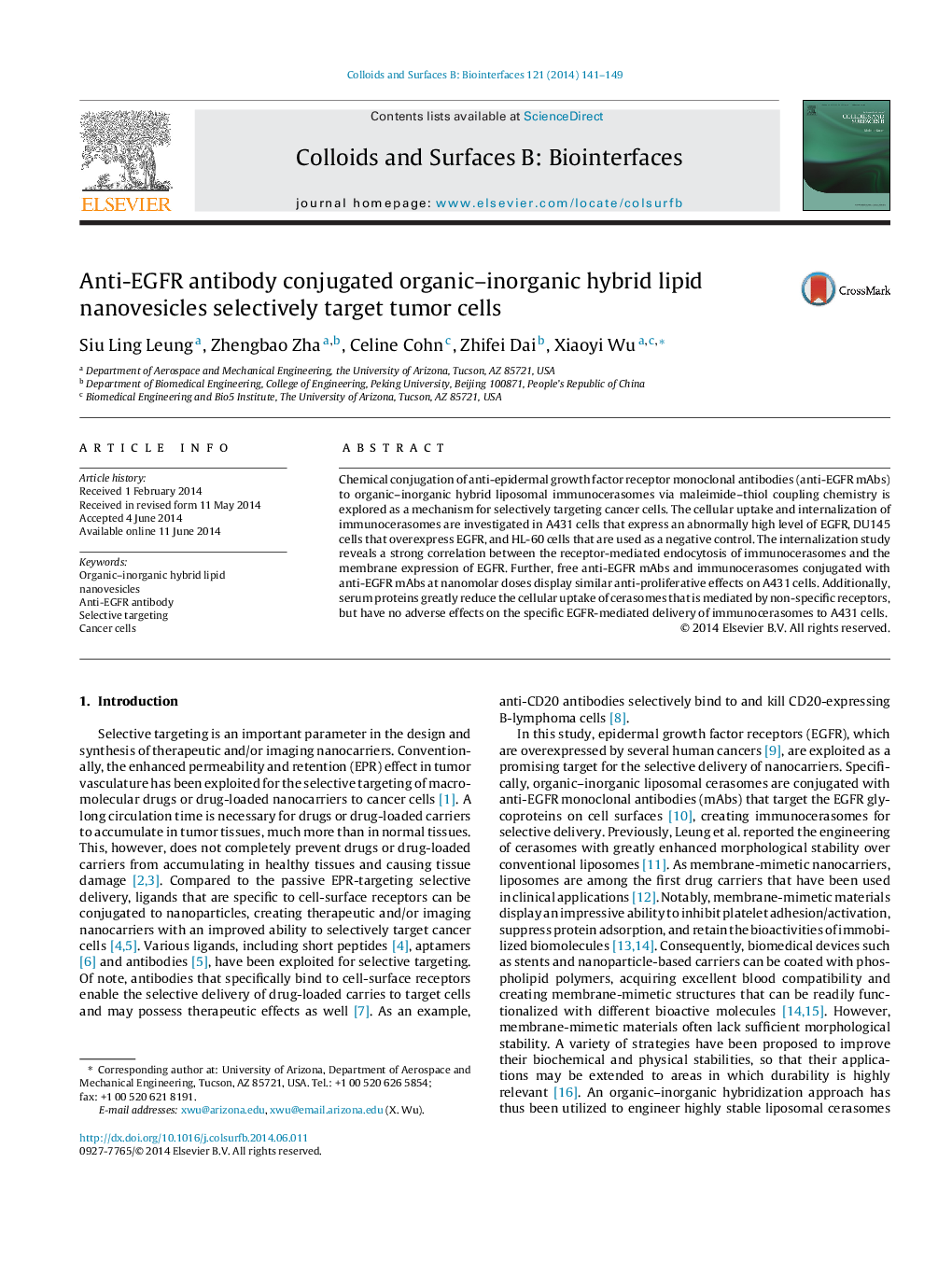| Article ID | Journal | Published Year | Pages | File Type |
|---|---|---|---|---|
| 599617 | Colloids and Surfaces B: Biointerfaces | 2014 | 9 Pages |
•Anti-EGFR antibodies were conjugated to highly stable organic–inorganic cerasomes, creating immunocerasomes.•Cellular uptake and internalization of immunocerasomes were examined in epidermoid carcinoma, prostate carcinoma, and leukemia cells.•Selective delivery of immunocerasomes to the cells was directly correlated to the membrane expression of EGFR by the cells.•Immunocerasomes displayed selective anti-proliferative effects on epidermoid carcinoma cells.
Chemical conjugation of anti-epidermal growth factor receptor monoclonal antibodies (anti-EGFR mAbs) to organic–inorganic hybrid liposomal immunocerasomes via maleimide–thiol coupling chemistry is explored as a mechanism for selectively targeting cancer cells. The cellular uptake and internalization of immunocerasomes are investigated in A431 cells that express an abnormally high level of EGFR, DU145 cells that overexpress EGFR, and HL-60 cells that are used as a negative control. The internalization study reveals a strong correlation between the receptor-mediated endocytosis of immunocerasomes and the membrane expression of EGFR. Further, free anti-EGFR mAbs and immunocerasomes conjugated with anti-EGFR mAbs at nanomolar doses display similar anti-proliferative effects on A431 cells. Additionally, serum proteins greatly reduce the cellular uptake of cerasomes that is mediated by non-specific receptors, but have no adverse effects on the specific EGFR-mediated delivery of immunocerasomes to A431 cells.
Graphical abstractFigure optionsDownload full-size imageDownload as PowerPoint slide
